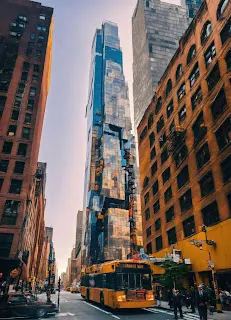Travel to Myanmar – Why Now is the Best Time For You to Visit
1. Unspoiled Beauty and Less Crowded Tourist Spots
Myanmar remains relatively unexplored compared to its Southeast Asian neighbors, providing a sense of discovery and adventure.
- Bagan: Explore the vast plain dotted with over 2,000 ancient temples, pagodas, and stupas, many of which date back to the 11th century. Experience the sunrise or sunset from one of the many viewpoints for a truly magical sight.
- Inle Lake: Marvel at the serene lake surrounded by mountains, with its unique floating gardens and stilt-house villages. Witness the distinctive leg-rowing technique of the local fishermen and visit the bustling local markets.
- Ngapali Beach: Enjoy the unspoiled white sandy beaches and clear turquoise waters. It’s a perfect spot for relaxation, with fewer tourists compared to other beach destinations in the region.
2. Rich Cultural Heritage
Myanmar is a treasure trove of cultural and historical sites.
- Yangon: Visit the magnificent Shwedagon Pagoda, a gold-plated stupa that is one of the most revered Buddhist sites in the country. Explore colonial-era buildings and the bustling Bogyoke Aung San Market.
- Mandalay: Explore the last royal capital of Myanmar, with its impressive Mandalay Palace, the hill offering panoramic views, and numerous monasteries. Don’t miss the U Bein Bridge, the world’s longest teak footbridge.
- Pyin Oo Lwin: Discover the colonial charm of this hill town with its botanical gardens, waterfalls, and the scenic train ride across the Goteik Viaduct.
3. Natural Beauty
Myanmar’s diverse landscapes range from mountains and rivers to beaches and forests.
- Hpa-An: Explore the picturesque town surrounded by limestone karst mountains, visit the Saddan Cave with its impressive stalactites and stalagmites, and enjoy the views from Mount Zwekabin.
- Mrauk U: Travel to the remote archaeological site of Mrauk U, with its ancient temples and pagodas set against rolling hills and misty mornings.
- Kyaiktiyo (Golden Rock): Visit the famous balancing rock covered in gold leaf, a significant pilgrimage site perched precariously on the edge of a cliff.
4. Warm and Hospitable Locals
The people of Myanmar are known for their warmth and friendliness, making visitors feel welcome and at home.
- Homestays and Community-Based Tourism: Engage with local families by staying in homestays, participating in village activities, and learning about their way of life.
- Festivals and Celebrations: Join in the numerous festivals throughout the year, such as the Thingyan Water Festival, where locals and visitors alike participate in joyful water fights to celebrate the Burmese New Year.
5. Developing Tourism Infrastructure
Myanmar has made significant strides in improving its tourism infrastructure, making travel more comfortable and convenient.
- Accommodations: A range of accommodations are available, from budget guesthouses and boutique hotels to luxury resorts.
- Transportation: Domestic flights, improved road networks, and train services make it easier to travel between major destinations.
- Tour Services: A growing number of tour operators offer guided tours, adventure trips, and cultural experiences, ensuring a well-rounded visit.
6. Unique Experiences
Myanmar offers experiences that are unique to the country and less commercialized.
- Hot Air Ballooning over Bagan: Float above the ancient temples at sunrise for an unforgettable view of the landscape.
- Traditional Craft Villages: Visit villages specializing in traditional crafts, such as weaving, lacquerware, and pottery. Participate in workshops and take home unique souvenirs.
- River Cruises: Take a cruise on the Irrawaddy River, experiencing life along the riverbanks and visiting remote villages and towns.
7. Culinary Delights
Myanmar’s cuisine is a flavorful fusion of influences from neighboring countries, offering a diverse range of dishes.
- Mohinga: Try the national dish, a rice noodle and fish soup often enjoyed for breakfast.
- Tea Leaf Salad (Lahpet Thoke): A unique salad made from fermented tea leaves, mixed with a variety of nuts, seeds, and vegetables.
- Shan Noodles: Enjoy this popular dish from the Shan State, featuring rice noodles with a savory tomato-based sauce, chicken or pork, and pickled mustard greens.
8. Supporting Local Economies
Traveling to Myanmar helps support local communities and economies, particularly in areas that rely heavily on tourism.
- Local Markets: Shop at local markets for handmade crafts, textiles, and traditional products, supporting local artisans.
- Community Projects: Participate in or donate to community-based tourism projects that promote sustainable development and benefit local people.
9. Favorable Climate
Myanmar’s climate can be very pleasant, particularly during the cooler months.
- Dry Season (November to February): This is the best time to visit, with cooler temperatures and minimal rainfall, ideal for exploring outdoor attractions.
- Hot Season (March to May): Although hotter, this season can be a good time to visit the beaches and enjoy water activities.
- Rainy Season (June to October): While there is more rainfall, this season sees fewer tourists and lush green landscapes, offering a different perspective of the country.
10. Visa Policies and Accessibility
Myanmar has made it easier for tourists to visit with simplified visa procedures and better connectivity.
- E-Visas: Many nationalities can now apply for an e-visa online, simplifying the entry process.
- Direct Flights: An increasing number of direct flights from major Asian cities and beyond make it more convenient to travel to Myanmar.
- Improved Border Crossings: Land border crossings with neighboring countries like Thailand have also become more streamlined, facilitating overland travel.
By visiting Myanmar now, you can experience its rich cultural heritage, stunning natural beauty, and warm hospitality while supporting local communities and enjoying the benefits of developing tourism infrastructure.


Post a Comment